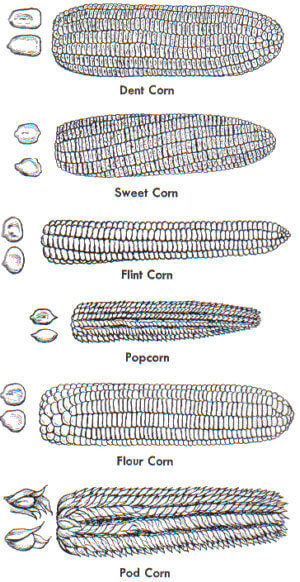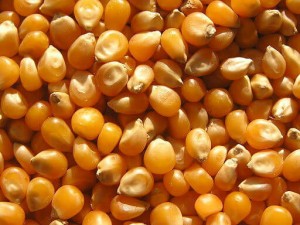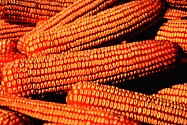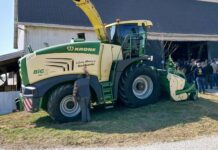If you’re new to the farm world, you might be surprised to know that there is more than just the fresh sweet corn we eat in the summertime.

Field (dent), sweet and popcorn are the most popular types of corn grown in the U.S., according to Iowa State University Agronomy Extension. Corn is classified by its kernel type.
Here are the six corn varieties, as defined by the National Corn Handbook Project:
Dent

Dent corn is also called field corn.
What it looks like: Dent corn is almost always yellow in the United States, but a few varieties are white.
Characterized by its dented appearance. The sides and backs of the kernels have corneous, horny endosperms. The core of the kernel is soft and floury and extends to the crown of the endosperm. Once the corn is dried, the kernels collapse and looks indented.
What it’s used for: More than 93 percent of dent corn is used for animal feed. It is also used raw in industry. White dent corn has a higher starch content than yellow dent, so it is commonly used in human food products. Dent corn also fuels cars and makes plastics, adhesives and starches.
Sweet

Sweet corn is the standard sugary corn. It was grown during pre-Columbian times by native American Indians.
What it looks like: What makes sweet corn different from other types of corn is that its sugary gene prevents the sugar from converting to starch during endosperm development. Instead, the dry, sugary kernels become wrinkled and glassy. Sweet corn is eaten while the ears are in the immature milk stage and the kernels are tender.
What it’s used for: Sweet corn is marketed fresh to consumers and not used as livestock feed. In the U.S., sweet corn is economically important. Most of it is grown in the northern states, and it’s also grown as a winter crop in southern Florida.
Popcorn

Popcorn is thought to be one of the oldest surviving types of corn. It’s growing conditions are similar to dent corn.
What it looks like: Popcorn has a hard, corneous endosperm and little soft starch. Usually, popcorn is like small-kerneled flint corn.
Popcorn kernels are pointed like rice or round like pearls. Primitive types of popcorn have thin seed coats, while varieties found more recently have thick seed coats.
What it’s used for: Like it’s name suggests, popcorn is used as freshly popped corn and in popcorn confections.
Flint

What it looks like: Flint corn’s small soft and granular center surrounded by a thick, hard and glassy outer layer. The kernels are smooth and round, the ears are long and slender, but there aren’t a lot of rows and kernels.
What it’s used for: Flint corn hasn’t been commonly grown in the United States since colonial times. It’s more often found growing in South America, Latin America and southern Europe. These regions use flint corn as food and feed.
Flour
Flour corn can be traced back to Aztec and Incan origins. It was ground into flour by American Indians.
What it looks like: Flour corn is soft throughout the kernel. There isn’t a hard endosperm like other corn types. When dried, the kernels shrink uniformly with little dent or no dent at all.
What it’s used for: Once flour corn has been dried, it can be ground easily. Flour corn is commonly grown in drier regions. Outside of the U.S., the Andean region of South America commonly grows flour corn.
Pod
What it looks like: The characteristics of pod corn can vary since it is highly self-sterile. Pod corn can be dent, flint, flour, pop, sweet or waxy. Each kernel is enclosed in husk, and the ear is also enclosed in a husk, just like other types of corn.
What it’s used for: Pod corn is used for ornamental purposes. It is not grown commercially.











Interesting article.
However, I am still not clear if the corn I have here in front of me is dent corn or sweet corn!
how wi colet the corn
I am not sure what type of corn I grow in my fields.Can youbsent the kink ti download the article
I don’t know what type of corn i should grow,What type of corn should i grow?
Sweet corn and popcorn are really popular!!